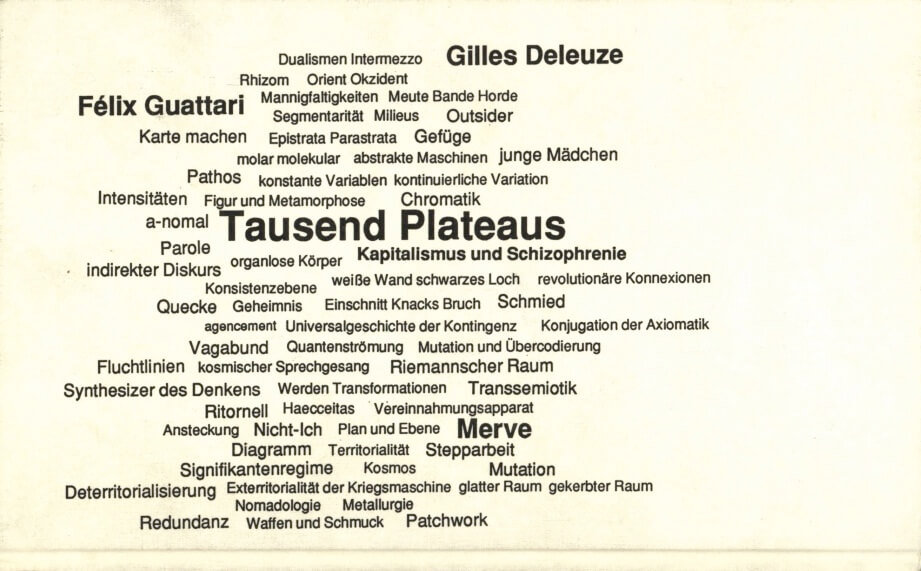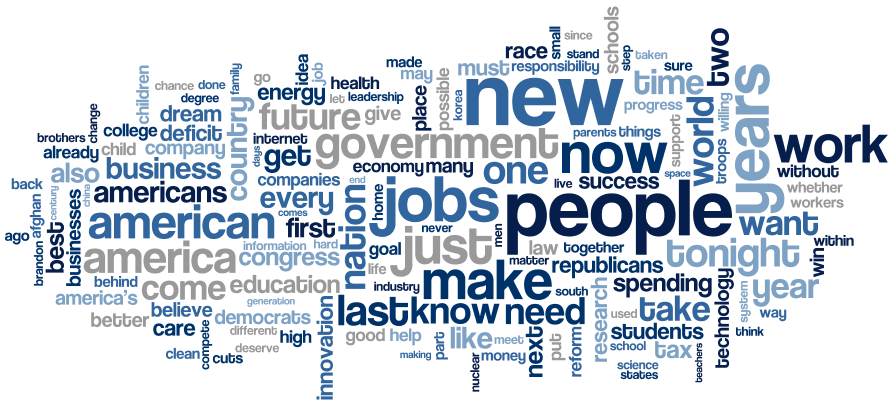09.12.2015 by Infogram
I know you’ve seen them before. Chances are you spotted one during a co-worker’s presentation at the office or colorfully displayed on a website you recently visited. They are called word clouds, and people use them to display text information in a visually engaging and interesting way.
Word clouds (also known as tag clouds) are a type of weighted list. They became popular in the 1990’s thanks to their online appeal. Some of the earlier web 2.0 websites and blogs used word clouds primarily for navigation purposes. The first word clouds on a high-profile website appeared on the photo sharing site Flickr, created in 2004.

One of the first known word clouds. Gilles Deleuze, Felix Guattari (1992). Tausend Plateaus.
Types of Word Clouds
Word clouds display text in varying font sizes, weight, or colors to show frequencies or categories. They can be arranged alphabetically or at random. With Infogram, each word is assigned a numerical value. The higher the number, the bigger the font size – with the words placed in random order. The word cloud below shows common male names in the United States and the UK, with ‘Smith’ being the most popular in both!
Frequency: In this case, the size of the word corresponds to its frequency, or how often the word is used. You are essentially showing the word’s popularity. Just remember, we are talking about frequency – not importance.
Category: For category word clouds the size of the word (or category) is based on how many subcategories it contains.
Keyword: This is a term often used when referring to search engine optimization (SEO). Keyword clouds group keywords that are relevant to a specific website or blog. Tag clouds in particular are used as navigational tools which make certain websites easier for search engines to find, which improves their page ranking.

A word cloud of President Obama’s 2011 State of the Union Address gives greater prominence to words that appear more frequently. January 26, 2011. Credit: Whitehouse.gov
Why Word Clouds are Great
Word clouds are fun visualizations that come in handy if you want to draw someone’s attention to your infographic, article or presentation. They help people identify trends and patterns that might have been difficult to see otherwise. Here are a few reasons why word clouds are great:
- Word clouds are visually eye-catching
- They are easy to read
- Great for discovering new SEO keywords
- Word clouds provide analysis and insight in an instant
- They help highlight and filter data
- Word clouds are easy to share
Word Cloud Warnings
While word clouds are a useful tool, they also come with a few potential drawbacks. They make sense when analyzing word usage, but are not an effective tool for exploring complex topics such as the budget or healthcare crisis. Here are a few things to look out for:
- They provide information about frequency without context
- They run the risk of being hard to read if words are similar sizes or colors
- Longer words take up more space, so they appear to be more frequent
- They can take up a lot of space
- Word clouds sometimes get a bad reputation due to their overuse online – so use wisely!
Get data visualization tips every week:
New features, special offers, and exciting news about the world of data visualization.
